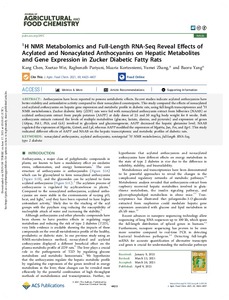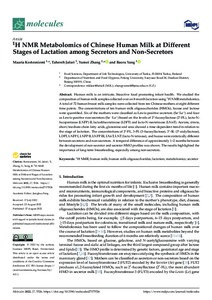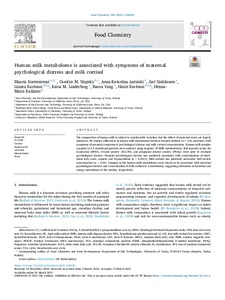Hae
Aineistot 1-6 / 6
Anthocyanin-rich extract from purple potatoes decreases postprandial glycemic response and affects inflammation markers in healthy men
<p>Our recent clinical study suggested that polyphenol-rich purple potatoes lowered postprandial glycemia and insulinemia compared to yellow potatoes. Here, 17 healthy male volunteers consumed yellow potatoes with or without purple potato extract (PPE, extracted with water/ethanol/acetic acid) rich in acylated anthocyanins (152 mg) and other phenolics (140 mg) in a randomized cross-over trial. Ethanol-free PPE decreased the incremental area under the curve for glucose (p = 0.019) and insulin (p = 0.015) until 120 min after the meal, glucose at 20 min (p = 0.015) and 40 min (p = 0.004), and insulin at 20 min (p = 0.003), 40 min (p = 0.004) and 60 min (p = 0.005) after the meal. PPE affected some of the studied 90 inflammation markers after meal; for example insulin-like hormone FGF-19 levels were elevated at 240 min (p = 0.001). These results indicate that PPE alleviates postprandial glycemia and insulinemia, and affects postprandial inflammation.<br></p>...
H-1 NMR Metabolomics and Full-Length RNA-Seq Reveal Effects of Acylated and Nonacylated Anthocyanins on Hepatic Metabolites and Gene Expression in Zucker Diabetic Fatty Rats
Anthocyanins have been reported to possess antidiabetic effects. Recent studies indicate acylated anthocyanins have better stability and antioxidative activity compared to their nonacylated counterparts. This study compared ...
1H NMR Metabolomics of Chinese Human Milk at Different Stages of Lactation among Secretors and Non-Secretors
<p>Human milk is an intricate, bioactive food promoting infant health. We studied the composition of human milk samples collected over an 8-month lactation using <sup>1</sup>H NMR metabolomics. A total of 72 human breast ...
Effect of Acylated and Nonacylated Anthocyanins on Urine Metabolic Profile during the Development of Type 2 Diabetes in Zucker Diabetic Fatty Rats
<p> The effect of nonacylated and acylated anthocyanins on urinary metabolites in diabetic rats was investigated. Nonacylated anthocyanins extract from bilberries (NAAB) or acylated anthocyanins extract from purple potatoes ...
NMR-based metabolomics approach on optimization of malolactic fermentation of sea buckthorn juice with Lactiplantibacillus plantarum
<p> This work investigated the impact of malolactic fermentation on the metabolomic profile of sea buckthorn juice to optimize the fermentation process for flavor modification. Six strains of L. plantarum were used with varied pH of the juice, cell acclimation, and fermentation time. <sup>1</sup>H-NOESY spectra were acquired from fresh and fermented juices with a total of 46 metabolites identified. Less sugars and quinic acid were metabolized at pH 2.7 while oxidation of ascorbic acid was reduced at pH 3.5. l-Malic acid, essential amino acids, and nucleosides were consumed early during fermentation while sugars in general were consumed later in the fermentation. If deacidification is the main target of fermentation, strains that produce less acids and ferment less sugars, shorter fermentation time, and lower starter pH should be used. Higher starter pH and longer fermentation time promote formation of antimicrobial compounds and potentially increase antioxidant stability. <br></p>...
Human milk metabolome is associated with symptoms of maternal psychological distress and milk cortisol
<p>The composition of human milk is subject to considerable
variation, but the effects of maternal stress are largely unknown. We
studied differences in human milk metabolome between Finnish mothers (n = 120,
secretors) with symptoms of prenatal symptoms of psychological distress
and milk cortisol concentrations. Human milk samples acquired at
2.5 months postpartum were analyzed using targeted <sup>1</sup>H NMR metabolomics.
Self-reported scores for depression (EPDS), overall anxiety (SCL-90),
and pregnancy-related anxiety (PRAQ) were used to evaluate psychological
distress. Prenatal psychological distress was positively associated
with concentrations of short-chain fatty acids, caprate, and
hypoxanthine (q < 0.0012). Milk cortisol was positively associated with lactate concentration (q < 0.05).
Changes in the human milk metabolome were shown to be associated with
maternal psychological distress and concentration of milk cortisol in a
dissimilarly, suggesting alterations in bacterial and energy metabolism
of the mother, respectively.</p>...





